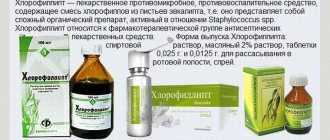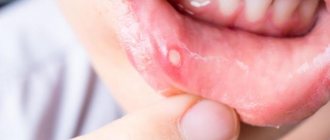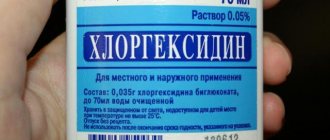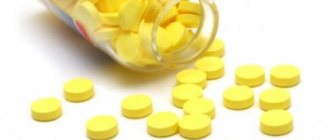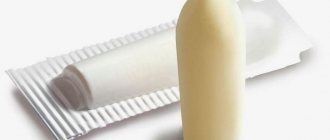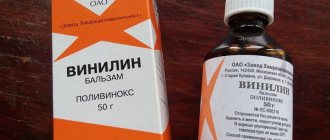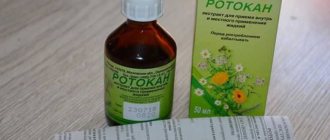Blue or methylene blue solution is an antiseptic for external use. Used to treat fungal, bacterial, and herpetic stomatitis. Indicated for use by persons over one year of age. With regular use, it allows you to achieve a lasting therapeutic effect in 3-5 days. In this material we will understand what blue is, what the active components of this product are, their properties, indications and contraindications for the use of the drug, features of its use in different age groups, possible side effects, as well as analogues on the market.
Pharmacodynamics and pharmacokinetics
This product belongs to the antiseptic category . Its action is based on the ability of the drug to interact with certain groups of substances of gram-positive bacterial cells , their proteins and mucopolysaccharides with the formation of poorly soluble and slowly ionizing complexes.
The drug has redox properties and is able to play the role of a donor of hydrogen ions in the body. Thanks to this, it can be used as an antidote for some poisonings.
The drug does not enter the systemic circulation when applied topically. When taken internally, the drug is excreted through the kidneys.
In addition, this product can be used for aquarium fish. It prevents the proliferation of ichthyophthirius, trichodin, aeromonads, myxobacteria, chilodonella, costia, and pseudomonads. Methylene blue for the aquarium is also used to improve acid metabolism in the tissues of fish if they have been transported, preparing antibacterial food, processing eggs and fry.
However, when using it, the water turns blue, which causes the equipment and accessories in the aquarium to get dirty and makes it difficult to monitor your pets. Therefore, it is advisable to use this product in a separate container.
Properties and use for medical purposes
This drug belongs to the group of antiseptics prescribed for external use (the effect is similar to Miramistin or Chlorhexidine for stomatitis). Its active substance binds bacterial cells and stops the development of pathogenic organisms. Additionally, this product creates a protective film on the surface of the mucosa, which promotes accelerated tissue regeneration. The drug is effective against most pathogenic bacteria and, when used systematically, can treat diseases such as stomatitis in 5 days.
The active components of the presented drug do not penetrate the skin bloodstream. This eliminates the possibility of any toxic effects of the drug on the body.
Indications for use
The drug is used for burns , purulent-inflammatory diseases of the skin, pyoderma .
In the case of cystitis and urethritis, the medicine can be used both internally and externally, including for diagnosing renal function .
Methylene blue is sometimes used for stomatitis . The drug treats the affected areas of the oral mucosa. In some cases, this leads to additional burns , so this remedy is rarely used today, especially since other effective drugs are now more popular.
Instructions: indications and contraindications
A solution of methylene blue can be prescribed for herpetic, bacterial or fungal stomatitis. The drug can be prescribed both for the treatment of the acute form of the disease and for the relief of a chronic inflammatory process.
Contraindications to the use of the drug for the treatment of stomatitis are:
- hypersensitivity to the drug;
- pregnancy, breastfeeding;
- patient age up to one year.
If the patient does not know for sure whether he is allergic to blue or not, he is recommended to consult a doctor before using such a drug. If necessary, the doctor will give him an allergy test. If it shows that there is hypersensitivity to the drug, it will be replaced with another drug that is safer for a particular patient, for example Miramistin or Chlorophyllipt. Read more about the use of Chlorophyllipt for stomatitis in this article.
Instructions for use of Methylene Blue (Method and dosage)
The instructions for Methylene blue, when used externally, advise that patients need to lubricate the affected areas of the skin with the solution, slightly covering the surrounding healthy areas. In this case, you need to use a 1-3% solution of the drug. The areas on the body where treatment is carried out should be cleaned in advance. The solution is applied using a cotton swab.
For diseases of the urinary system, use an aqueous solution of Methylene Blue 0.02%. To do this, the drug is diluted independently.
Adults take the medicine internally in a dosage of 0.1 g 3-4 times a day. For children, doses are calculated based on age - 0.005-0.01 g per 1 year of life. Children should take the medicine at the same frequency as adults.
In case of severe poisoning with carbon monoxide , hydrogen sulfide and cyanide , use 50-100 ml of a 1% aqueous solution or a 1% solution in 25% glucose. The medicine is administered intravenously .
For poisoning with nitrite or aniline derivatives, Methylene Blue is used as an antidote. A 1% solution is administered intravenously at 0.1-0.15 ml/kg.
In all cases, the duration of treatment is determined individually by a specialist.
In addition, this medicine is used for aquariums. The instructions for fish provide several methods of use:
- cleaning a freshwater aquarium - add a solution at the rate of 1 drop per 2.5 liters of water, first dissolve it in 100-200 ml of water, then pour in small portions, stirring a little. After 5 days, half the water in the aquarium is replaced. If necessary, the procedure can be repeated for another 5 days. Upon completion of treatment, the water is clarified using filters with activated carbon , or it is partially replaced;
- improvement of tissue respiration of fish - the solution is administered over 5 days at a dosage of 1 ml per 75 liters of water;
- antibacterial food - 3 drops of solution diluted with water in a ratio of 1 to 2 and mixed with 3 g of food, the mass is mixed well and dried at room temperature. Fish should receive such food for 10 days;
- processing caviar - dilute the drug at the rate of 1 ml per 50 ml of water and place caviar in such a solution for 2-3 hours;
- treatment of marine fish - the drug is added to the fish tank containing aquarium water at the rate of 1 ml of solution per 10 liters of water, after which it is mixed well and the fish are added there. They are kept in this way for three hours. This treatment should be carried out 5 times every other day.
Side effects
If the recommended dose of the drug is exceeded or a person is hypersensitive to the active substance, blue in the treatment of stomatitis may cause side effects. Most often, patients in such cases experience severe irritation of the mucous membrane and redness in the mouth. Side effects from this drug disappear after stopping its use.
In persons with reduced immunity, as well as in children over one year old, an overdose of blue may experience stomach upset. If such a symptom appears, patients should immediately consult a doctor. He will prescribe medication to relieve the condition and replace the bluing with another rinse.
Methylene Blue price, where to buy
Buying Methylene Blue in Moscow and other Russian cities is becoming increasingly difficult. Now this remedy is losing popularity and is rarely found in pharmacies. The price of Methylene Blue in Moscow on average starts from 26 rubles. In the regions, the product can be obtained at a lower cost. And the average price of the drug in Ukraine is 31 hryvnia.
- Online pharmacies in UkraineUkraine
Pharmacy24
- Methylene blue aqueous-alcoholic solution 1% 10 ml PAT Monfarm, Ukraine
18 UAH.order - Methylene blue aqueous-alcoholic solution 1% 20ml PAT Monfarm, Ukraine
19 UAH order
Analogs
If for some reason the drug is not suitable for the patient, it can be replaced with analogues. These are:
- Hydroperite. Tablets for preparing an antiseptic solution. Used to rinse the mouth for stomatitis;
- Potassium permanganate. Antiseptic for treating mucous membranes;
- Myristamide. A colorless antiseptic liquid that destroys microorganisms. Used for various forms of stomatitis;
- Sodium tetraborate. Transparent disinfectant liquid used in dentistry, gynecology, surgery.
You should not replace one drug with another on your own. If you decide to use a bluing substitute, be sure to contact the doctor who prescribed this medication and discuss the replacement with your doctor.
Things to remember when treating with methylene blue
Having chosen the product in question for regular treatment of the aquarium, it is necessary not only to study the instructions for its use, but also to learn about the features of use. In an aquarium, methylene blue can, along with improving the health of its inhabitants, cause the following changes:
- paint the walls of the vessel if it is made of plastic;
- give color to some objects inside the aquarium, primarily those that have large pores and light color (for example, natural stones, corals);
- destroy the balance of nitrogenous compounds contained in water.
Having the ability to completely remove protozoan parasites and fungi from the aquarium and the fish’s body, blueing requires taking into account the specifics of its effects. Therefore, before using the drug solution, light, easily stained objects and decorations should be removed from the container so that they do not change their shade and lose their attractiveness.
conclusions
- Blue is an antiseptic whose main active ingredient is methylthioninium chloride.
- The drug is used in dentistry to treat bacterial, fungal, and herpetic stomatitis.
- The main contraindications to its use are hypersensitivity to the drug, pregnancy, and the patient’s young age.
- To treat the mucous membrane, use an aqueous solution of blue. They treat the affected areas of the mouth, as well as nearby tissues. The product is also used to rinse the mouth.
- The course of treatment with blue is from 5 to 10 days. The exact duration of treatment is determined by the doctor, taking into account the patient’s condition, the type of stomatitis, as well as the presence of concomitant diseases. Rinsing can be combined with cauterization of problem areas. Read more details about how to cauterize stomatitis here.
Qualities of methylene blue conditioner
Among aquarium lovers, the drug in question is considered one of the mildest and most effective. It is easy to use; just follow the rules given in the instructions for use. The effects of air conditioning are varied:
- The drug kills parasites, fungi and protozoan bacteria that can cause the death of your pets. Disinfection of water occurs with the rapid destruction of parasites such as ichitophthirius and chylodenella.
- The conditioner also provides more active cellular respiration of fish tissues due to its donor-acceptance properties. As a result, the fish become less sensitive to various external adverse influences, and the process of caviar formation improves. It is especially important to restore the cellular respiration of aquarium inhabitants during prolonged oxygen starvation, which can occur, for example, during long-term transportation of fish.
- Blue aquarium conditioner copes with the task of disinfecting already laid eggs. If blue is added to the aquarium directly in fish food, the effect of the drug becomes milder and the incubation of eggs is accelerated. The fish eat the food with appetite, since the drug does not change the taste of their usual food.
- External injuries and negative changes in the condition of the fish are eliminated: the appearance of “fluff” on the surface of their body, cuts, deterioration in the appearance of scales, white spots, pimples and excessive mucus.
This drug can be used for both treatment and prevention of diseases. Methylene blue should be added to the aquarium in a certain way in order to obtain the desired result and not harm its inhabitants.
